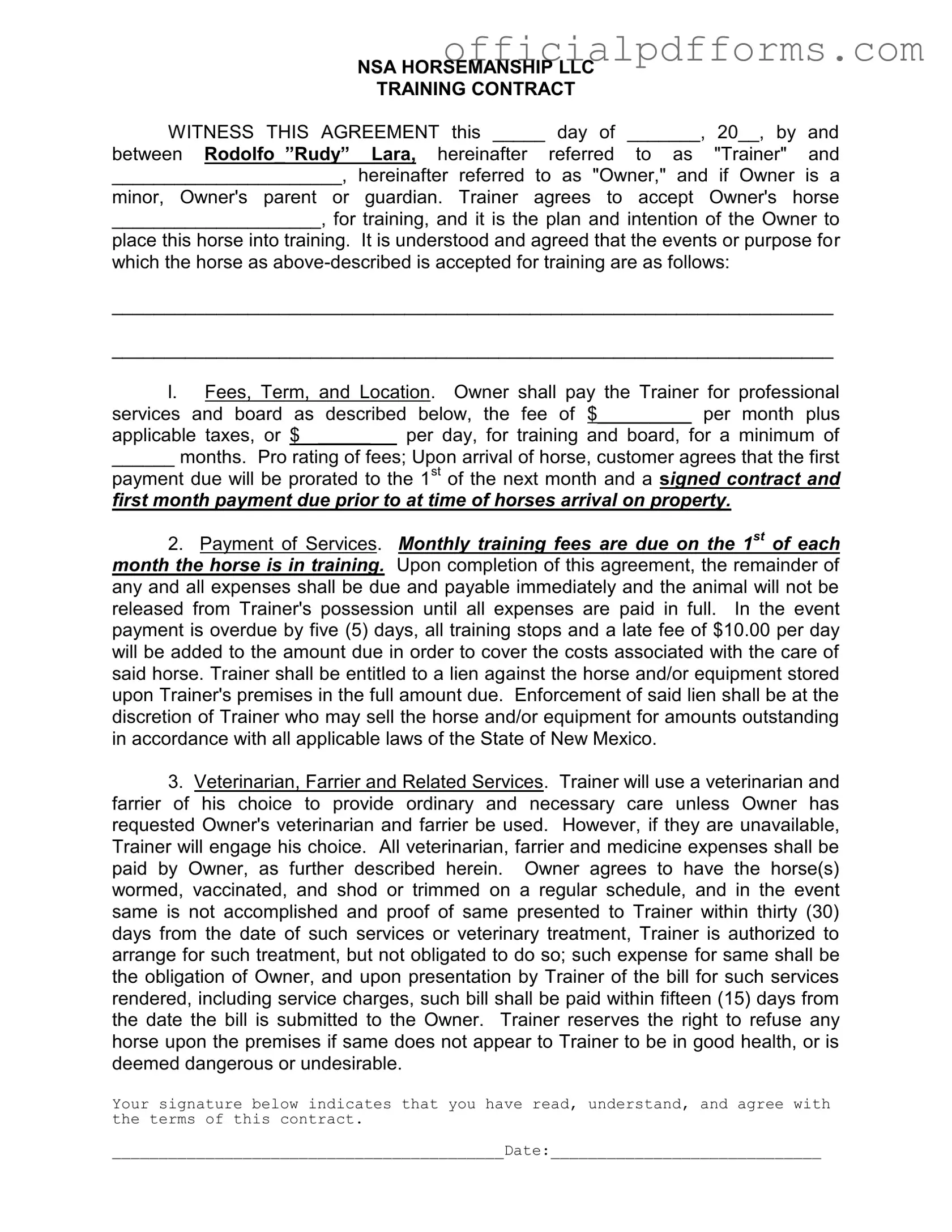Fill in a Valid Horse Training Contract Form
The Horse Training Contract form is a legal document that outlines the agreement between a horse owner and a trainer regarding the training and care of a horse. This contract specifies the responsibilities of both parties, including payment terms, care provisions, and liability considerations. To ensure clarity and mutual understanding, it is essential for owners to complete this form accurately and thoroughly.
Fill out the Horse Training Contract form by clicking the button below.
Access Form Online
